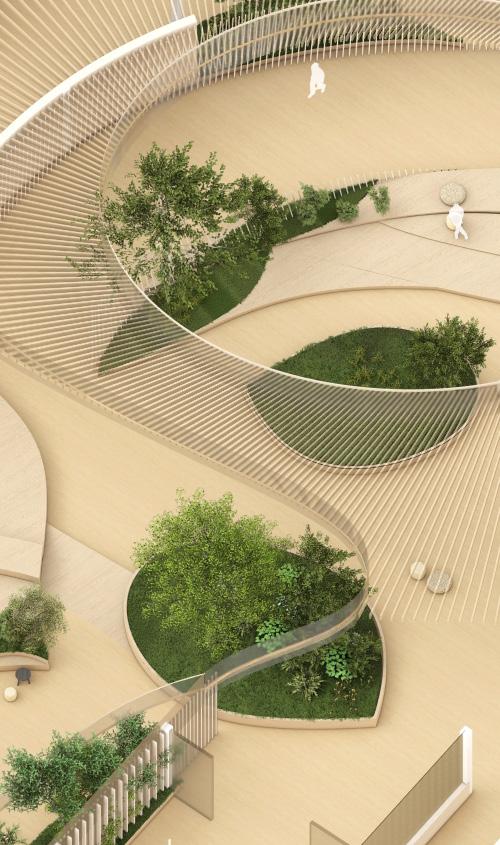
1 minute read
REFLECTIONS
from Studio 3.2
ATELIER’S POSITION
Developing a project in CPU atelier enabled me to explore and understand complex systems of connections that bond individual structrures into a multilevel, organism of mutual links. Developing project with consideration of its wider economical, social and environmental impact widened my perception of architecture’s role in human life. Furthermore, atelier’s aim to utilise digital tools and new technologies encouraged me to experiment with design form to find the most efficient design solutions.
Advertisement
Biophilic Design And Sustainability
Prioritizing environmental design impacted significantly project, dictating its form, materiality and facade design. Being a part of CPU atelier I learnt the importance of passive energy solutions and how to aply them to the project for the effective performance. Moreover, while incorporating various strategies into building and testing different outcomes I have learnt how each, small decision can impact the environment on a major level. Thus I acknowledged the responsibility of architect’s role in shaing future, sustainable cities.
Technology
The development of tactile detail was a challenging, yet very enriching task, as it showed me the complexity that stands behind architectural elements. It contributed to broadening my knowledge about construction materials, tools and processes, as well as encouraged me to consider innovative structural strategies, which I tried to implement in the project.
SOCIAL, ECONOMICAL AND CULTURAL CONTEXT
Humanities lectures remarkably affected my attitude towards architecture, as I could learn about different ways of perceiving and creating architecture. Studying texts from various architects and theorists made me question the rooted schemes of architectural design. Moreover, I have learned about the importance of vernacular architecture and natural architetcure, which impacted the design process of the project, making it more human-centred and community based.
Synthesis
Engawa aims to synthesise afforementioned aspect in a cohesive, engaging manner, The design drivers - sustainability, connectivity and biophilic, user-centred design - designated design path on each stage, resulted in a structure that prioritises ecology, users, local context and regeneration of the area. The values that I learned throughout the design process will significantly impact my further architectural journey, where I will try to implement the approach and knowledge gained during Studio 3.2.









